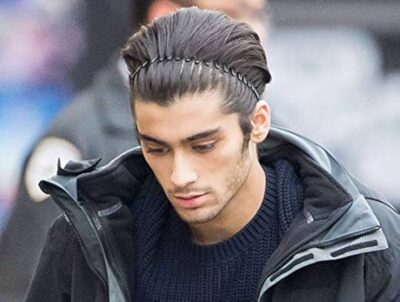When it comes to fashion, few cultural movements have influenced style as profoundly as the music scene. From grunge to glam rock, punk to pop, band m
When it comes to fashion, few cultural movements have influenced style as profoundly as the music scene. From grunge to glam rock, punk to pop, band members have long served as trendsetters—not just in music, but in their personal style. One of the most prominent and expressive aspects of a musician’s image is their hairstyle.
“Band hairstyles” refer to the signature haircuts, colors, and styling choices worn by members of musical bands across various genres. These hairstyles often become visual representations of the music itself, embodying the spirit, rebellion, or aesthetic of the genre. Whether wild and untamed or sleek and polished, these hairstyles make bold statements and often inspire legions of fans to adopt similar looks.
In this article, we’ll dive into the world of band hairstyles: iconic looks from music history, modern trends, DIY styling tips, and answers to frequently asked questions.
1. A Brief History of Band Hairstyles
1960s – The British Invasion and Classic Cuts
The Beatles revolutionized not only music but also men’s hairstyles. Their “mop top” cuts—rounded, chin-length hair with bangs—challenged the clean-cut, conservative look of the ’50s. Bands like The Rolling Stones and The Byrds followed suit, embracing longer locks that symbolized youthful rebellion.
1970s – Rock, Punk, and the Birth of Big Hair
The 1970s exploded with variety. On one end, you had Led Zeppelin with their long, curly locks and on the other, punk bands like the Sex Pistols and The Clash who popularized spiky hair, brightly colored mohawks, and shaved sides. Glam rock artists like David Bowie and bands like KISS took hair to theatrical extremes with wigs, vibrant dyes, and volume to match their stage personas.
1980s – Hair Metal and Extreme Volume
This decade was all about big hair, especially in the hard rock and metal scenes. Bands like Mötley Crüe, Poison, and Bon Jovi embraced teased, sprayed, and heavily layered styles. Hairspray was a must, and longer was better. These styles were both wild and gender-fluid, with men wearing their hair as long and styled as any glam diva.
1990s – Grunge and Natural Textures
In reaction to the excessive styling of the ‘80s, the grunge era brought back minimalism. Bands like Nirvana, Pearl Jam, and Soundgarden adopted unkempt, “I-woke-up-like-this” hair. Long, greasy, and natural textures ruled. This look was more anti-style than a calculated fashion, reflecting the ethos of grunge music.
2000s – Emo, Pop-Punk, and Scene Hair
The early 2000s brought us the rise of emo and pop-punk. Bands like My Chemical Romance, Fall Out Boy, and Paramore had signature hairstyles featuring jet-black dye, side-swept bangs, and choppy layers. For “scene kids,” hair became a canvas: bright colors, raccoon stripes, extensions, and exaggerated volume defined the look.
2010s–Present: Blending Styles and Creative Freedom
In the 2010s, band hairstyles diversified as genre boundaries blurred. Artists mixed styles freely: from undercuts with long tops, to platinum dye jobs, dreadlocks, braids, mullets, and buzz cuts. Artists like Billie Eilish made neon roots mainstream, while K-pop bands like BTS popularized sleek, colorful, and androgynous styles that influenced global fashion trends.
2. Iconic Band Hairstyles and Their Impact
Some hairstyles are so iconic they are instantly associated with certain bands or artists. Here are a few standout examples:
- Robert Smith (The Cure) – His wild, backcombed black hair and smeared red lipstick defined goth aesthetics.
- Kurt Cobain (Nirvana) – His messy, bleached blonde hair symbolized grunge nonchalance.
- David Bowie (Ziggy Stardust) – The flaming red mullet was revolutionary and continues to inspire avant-garde stylists.
- Hayley Williams (Paramore) – Known for her ever-changing hair colors, from orange to neon pink.
- Jared Leto (30 Seconds to Mars) – Frequently changes his hairstyle, from mohawks to long Jesus-like locks, often pushing boundaries.
- BTS – Each member experiments with hair color and style, setting trends in global fashion, especially in Asia and among Gen Z fans.

3. Modern Trends in Band Hairstyles
As of the 2020s, modern band hairstyles reflect a mix of retro inspiration and current fashion. Some ongoing trends include:
- Mullet Revivals – Once mocked, the mullet is back, sported by rock and indie bands for its quirky vintage vibe.
- Dyed Buzz Cuts – Short styles dyed in vivid colors, often seen in hip-hop, punk, and alt-rock scenes.
- Bleached Hair – Bleach-blonde is still going strong, with many artists using it to stand out on stage.
- Curly Natural Hair – Embracing natural texture has become more common, especially among R&B, soul, and alternative artists.
- Gender-Neutral Cuts – Androgynous styles like pixie cuts, soft shags, or long bobs are popular with artists of all genders.
- E-boy/E-girl Aesthetic – Influenced by internet culture, this look blends emo and punk styles with undercuts, split dyes, and curtain bangs.
4. DIY Tips for Recreating Band Hairstyles
Love the band look? Here are tips for recreating your favorite styles:
For Long, Grunge Hair:
- Let it grow naturally and avoid over-styling.
- Use dry shampoo to add texture.
- Layers help achieve the messy look.
For Punk or Emo Styles:
- Ask for choppy layers or an asymmetrical cut.
- Use straighteners, volumizers, and wax for definition.
- Experiment with semi-permanent dyes for bold colors.
For Glam or Metal Hair:
- Tease the roots and use volumizing mousse or hairspray.
- Try clip-in extensions for added length or volume.
- Big curls or waves work well for a dramatic effect.
For K-Pop Inspired Looks:
- Get a soft perm for natural waves.
- Dye hair in pastel or vibrant shades.
- Use a flat iron for sleek finishes, and edge-control for neatness.
For Clean-Cut Indie Rock Styles:
- Go for tapered cuts with longer tops.
- Use matte pomades or clay for texture without shine.
- Natural or dyed colors work equally well.
5. Cultural and Gender Influences
Band hairstyles are more than fashion—they can reflect societal shifts, gender norms, and cultural identity. For example:
- Androgyny: Many modern bands blur gender lines through their hair—embracing softness, color, and length traditionally coded as feminine.
- Cultural Expression: Artists from different backgrounds use hair to celebrate heritage (e.g., dreadlocks, braids, afros).
- Rebellion: Hair has always been a tool of protest. Shaving it off, dyeing it, or styling it outrageously challenges societal expectations.
Music, hair, and identity are deeply linked. The way a band wears its hair can speak volumes before the first note is even played.
FAQs About Band Hairstyles
Q1: What are the most popular band hairstyles today?
Popular styles today include mullets, shag cuts, bleached or pastel-dyed hair, buzz cuts with designs, and long, textured styles. K-pop and indie rock bands are particularly influential in current trends.
Q2: Are band hairstyles different across music genres?
Yes. For example, metal bands favor long, rugged hair, punk bands go for mohawks or shaved styles, while pop and K-pop bands opt for clean, colorful, and styled looks. Genre often dictates the aesthetic.
Q3: How can I style my hair like a band member on a budget?
DIY styling tools like flat irons, affordable hair dyes, and products like pomade or gel can go a long way. YouTube tutorials are a great resource, and some styles (like grunge) require little effort or money.
Q4: Can women wear traditionally male band hairstyles?
Absolutely. Gender-fluid fashion is widely accepted, and women often rock mohawks, mullets, or emo cuts just as confidently as men. The key is confidence and personal flair.
Q5: Are there professional salons that specialize in alternative or band styles?
Yes. Many alternative salons cater to punk, goth, or rock styles. Look for salons that mention creative or edgy cuts in their services. Some stylists even specialize in K-pop or emo looks.
Q6: How do band members maintain their hair with frequent touring?
They often travel with stylists or use simple maintenance routines. Dry shampoo, heat-protectant sprays, and leave-in conditioners are common tour essentials. Many also wear hats or bandanas off-stage.
Conclusion
Band hairstyles are much more than fashion statements—they’re cultural artifacts, reflections of identity, and extensions of musical expression. Whether you’re emulating the glam of the ’80s, the edge of punk, or the cool vibes of indie rock, your hair can speak volumes about your personality and musical taste.
Music and hair have always gone hand in hand. As bands evolve, so do their looks. One thing is certain: as long as there’s music, there will be unforgettable hairstyles that shape the way we see, hear, and feel the rhythm of culture.
Must Visit: spotlightlive




COMMENTS